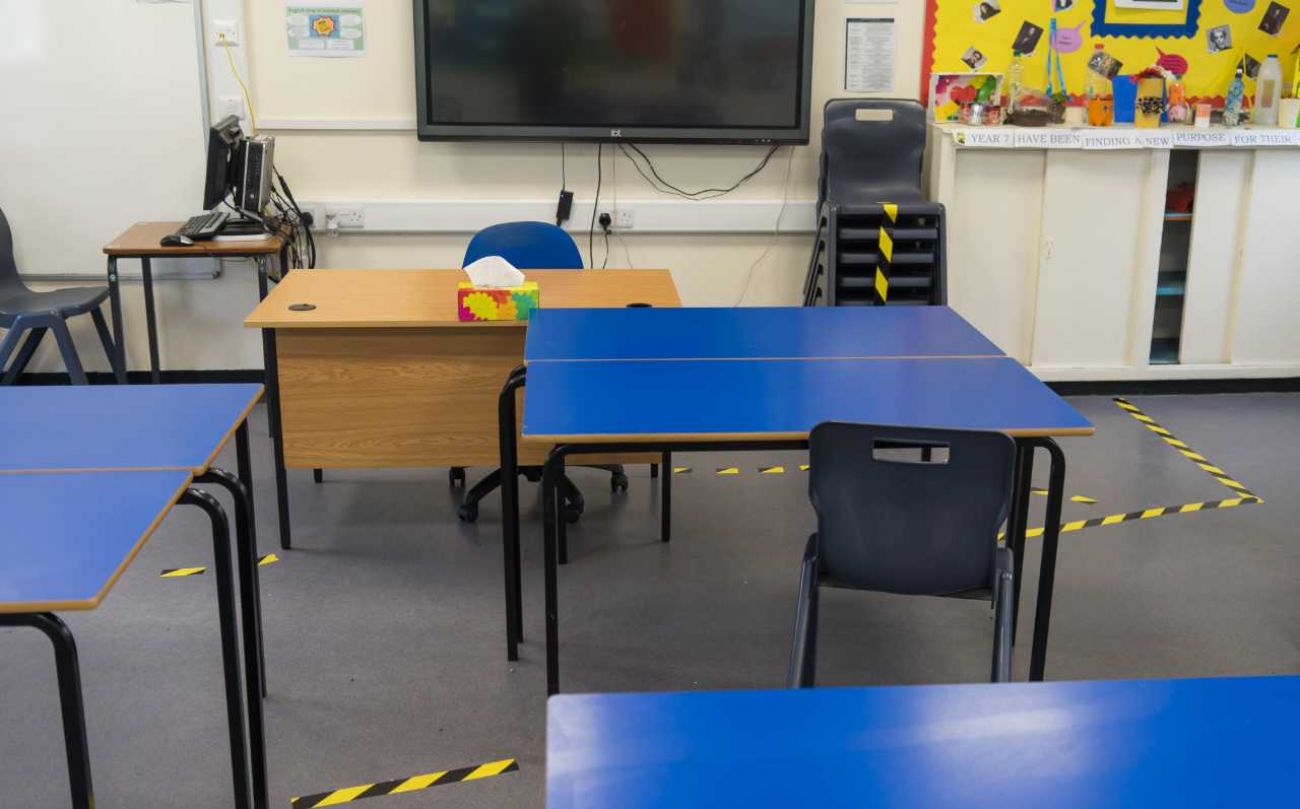School administrators worry as Michigan returns to stricter pupil accounting rules

Aug. 10: Michigan schools must teach in-person, get waiver, or lose funding
The state is returning to pre-pandemic rules for counting students, but some Michigan school administrators worry that those standards aren’t flexible enough – or clear enough – for students learning both in person and online.
“We want administrators to have the flexibility they need to innovate for their students and the confidence to know that when they do innovate they’re not going to find out after the fact that they did something wrong because of a misunderstanding,” said Bob Kefgen, lobbyist for the Michigan Association of Secondary School Principals.
State funding is at stake for districts that don’t meet pupil accounting requirements reinstated for the coming school year. To receive full funding, districts must offer at least 180 days and 1,098 hours of instruction. At least 75 percent of students must attend each day.
Related:
- Gov. Whitmer urges Michigan schools to mask up, stops short of mandate
- Michigan schools can’t fill teacher aide jobs: ‘There are no applicants.’
- What’s next for abandoned schools in Detroit? Neighbors say almost anything is better than vacancy.
- Whitmer vetoes plan to give $1,000 scholarships for elementary reading help
The Legislature relaxed those requirements last school year because of the pandemic, but adjourned without extending those provisions for the 2021-22 school year, according to a memo last week by Delsa Chapman and Kyle Guerrant, deputy state superintendents.
Last school year, the MDE waived the minimum instructional time requirement as long as districts delivered the same course content that they would have in 180 days and 1,098 hours.
In-person attendance is measured by simple physical presence in classrooms, but it’s more complicated for virtual learners. Under the reinstated pre-pandemic rules, teachers must track attendance either by documenting weekly individual two-way interactions with each student or by demonstrating completed course work or participation in a synchronous course.
During the pandemic, the relaxed rules required only one documented interaction per month.
The return to pre-pandemic rules comes as virtual learning gains a stronger foothold.
“The challenge we’re finding as we talk to principals around the state is [that the policy] doesn’t accommodate truly blended learning where students are engaged in the classroom part time and virtually part time,” Kefgen said.
During the pandemic, many students bounced back and forth between virtual and in-person learning as individuals, classrooms, and sometimes entire schools were quarantined. Teachers in some districts became adept at switching between delivery models or sometimes teaching in-person and online simultaneously.
It’s a model that has worked well for many students, particularly older ones, and some administrators want to keep it as an option but aren’t sure how to manage pupil accounting requirements, Kefgen said.
“When you have such a complex and unclear rule set, educators are naturally and understandably reticent to try new things, or stick their neck out, or potentially innovate because they don’t want to get in trouble or lose funding,” Kefgen said. “Principals would like to do some creative things and look at ways of extending learning time beyond the classroom but it doesn’t feel like they have an accessible or easy-to-use roadmap to get there.”
Superintendents also are concerned, said Bob McCann, executive director of the K-12 Alliance of Michigan, which represents districts in the state’s five most populous counties.
“The reality is this pandemic is ongoing. It’s trending in concerning directions right now, and there is concern out there about what happens if things really start going wrong from a public health perspective,” he said. “It would be better to have the flexibility in place ahead of time rather than scramble at the last minute to have assurance that kids forced to move into a hybrid learning plan are still counted and their education is still funded.”
Tracie Mauriello reports for Bridge Michigan and Chalkbeat Detroit.
Michigan Education Watch
Michigan Education Watch is made possible by generous financial support from:
Subscribe to Michigan Health Watch
See what new members are saying about why they donated to Bridge Michigan:
- “In order for this information to be accurate and unbiased it must be underwritten by its readers, not by special interests.” - Larry S.
- “Not many other media sources report on the topics Bridge does.” - Susan B.
- “Your journalism is outstanding and rare these days.” - Mark S.
If you want to ensure the future of nonpartisan, nonprofit Michigan journalism, please become a member today. You, too, will be asked why you donated and maybe we'll feature your quote next time!





